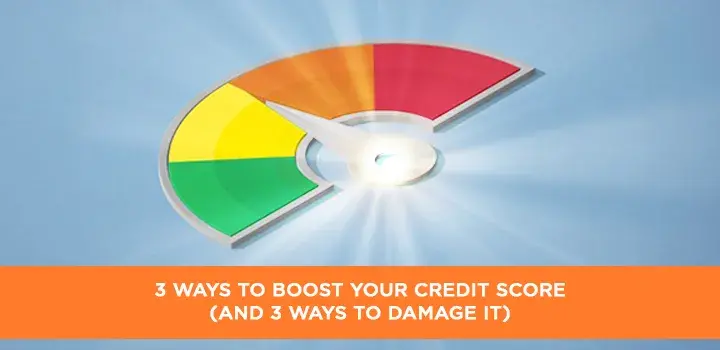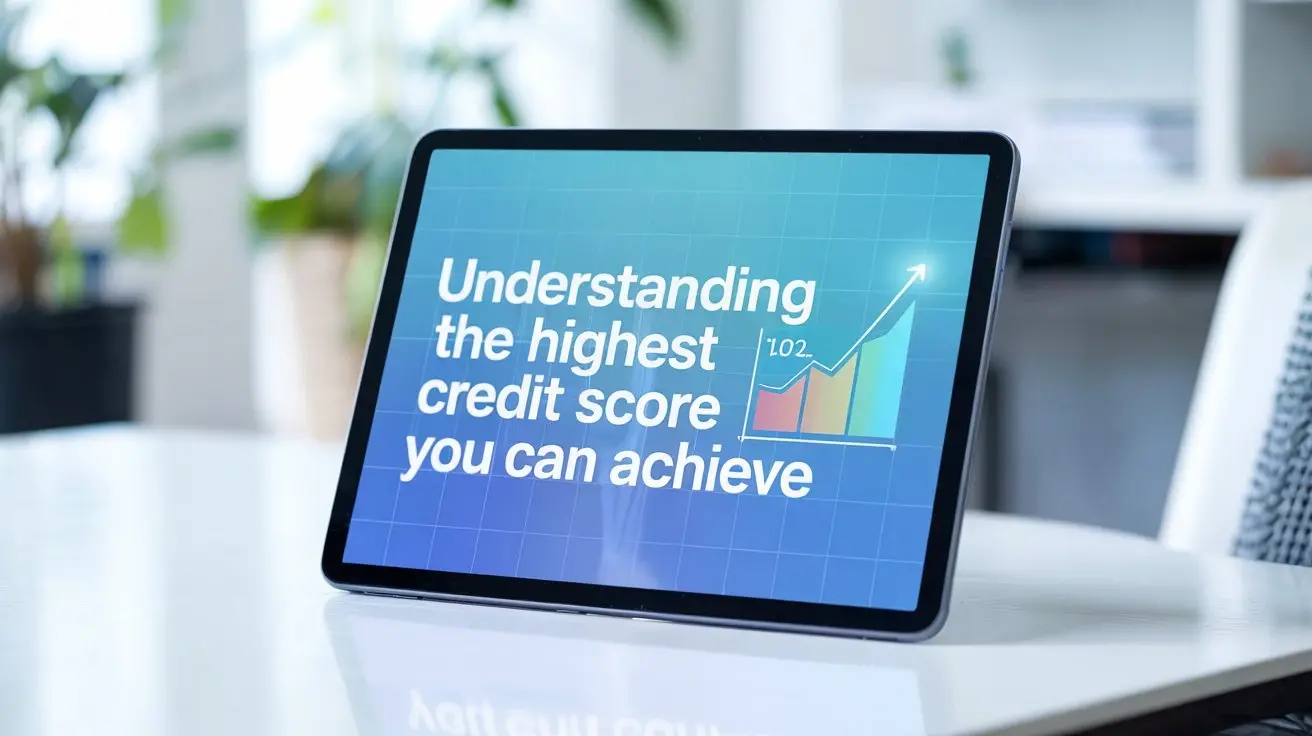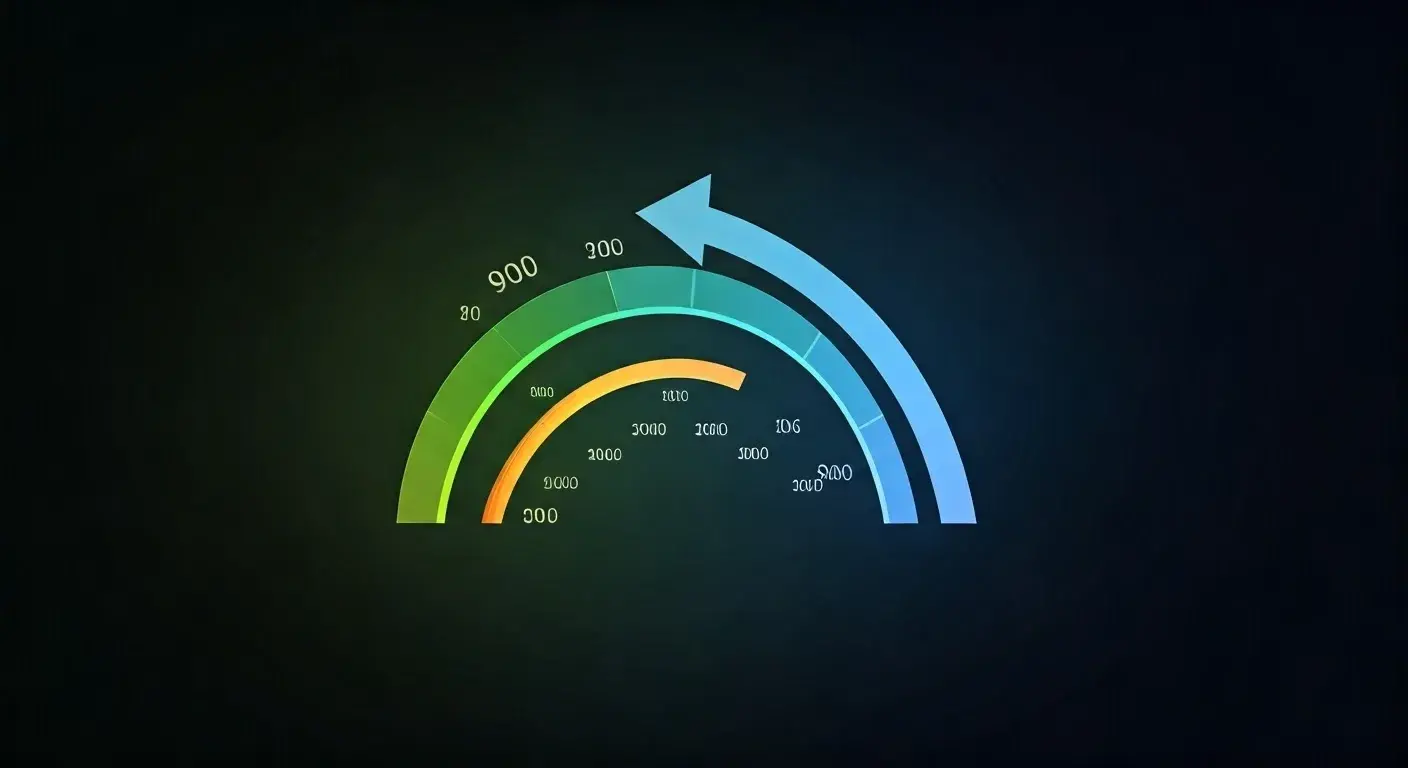-
Posted on: 21 Dec 2022

-
Mastering your credit score is crucial for financial well-being. This guide reveals the most effective strategies to elevate your creditworthiness and common pitfalls to avoid, ensuring you build a strong financial future. Learn the essential 3 ways to boost your credit score and the 3 critical ways to damage it.
3 Powerful Ways to Boost Your Credit Score
In the realm of personal finance, your credit score is a powerful indicator of your financial health and trustworthiness. A high credit score can unlock doors to better loan terms, lower interest rates, and even preferred rental agreements. Conversely, a low score can present significant hurdles. Fortunately, improving your credit is an achievable goal with the right knowledge and consistent effort. This section will illuminate the three most impactful strategies you can implement to significantly boost your credit score, transforming your financial outlook for 2025 and beyond.
3 Critical Ways You're Damaging Your Credit Score
While striving for credit improvement, it's equally vital to understand the actions that can actively harm your score. Many individuals unknowingly engage in practices that erode their creditworthiness, leading to missed opportunities and higher costs. Recognizing these detrimental habits is the first step toward correcting them. This section will expose the three most common and damaging mistakes that can sink your credit score, providing you with the crucial awareness needed to steer clear of these financial landmines.
Understanding the Pillars of Your Credit Score
Before diving into the specific strategies for boosting or damaging your credit, it's essential to grasp the fundamental components that determine your credit score. FICO and VantageScore, the two dominant credit scoring models in the United States, consider several key factors. While the exact weighting can vary slightly, understanding these pillars will empower you to make informed decisions about your credit management. As of 2025, these factors remain the bedrock of credit scoring.
The Cornerstone: Payment History
This is, by far, the most significant factor influencing your credit score, typically accounting for about 35% of your FICO score. It reflects your track record of paying your bills on time. Every late payment, from 30 days overdue to more severe delinquencies, can have a substantial negative impact. Conversely, a consistent history of on-time payments is the most powerful tool for building and maintaining a high credit score. This includes not just credit cards but also installment loans like mortgages, auto loans, and student loans.
The Balancing Act: Credit Utilization Ratio
Your credit utilization ratio (CUR) is the second most important factor, typically making up around 30% of your FICO score. It measures the amount of credit you're using compared to your total available credit. For example, if you have a credit card with a $10,000 limit and you owe $3,000 on it, your CUR is 30%. Experts generally recommend keeping your CUR below 30% on each card and overall, with an ideal target of below 10% for maximum benefit. A high CUR signals to lenders that you might be overextended and at a higher risk of default.
The Long Game: Length of Credit History
The average age of your credit accounts and the age of your oldest account contribute significantly, usually around 15% of your FICO score. A longer credit history generally indicates more experience managing credit responsibly. This factor emphasizes that building credit is a marathon, not a sprint. Lenders want to see a consistent, long-term relationship with credit.
The Variety Factor: Credit Mix
This factor, accounting for about 10% of your FICO score, looks at the different types of credit you manage. Having a mix of revolving credit (like credit cards) and installment loans (like mortgages or auto loans) can be beneficial, as it demonstrates your ability to handle various credit obligations. However, this is less critical than payment history or utilization, and you shouldn't open new accounts solely to improve your credit mix.
The Prudent Approach: New Credit Applications
When you apply for new credit, lenders often perform a "hard inquiry" on your credit report. Each hard inquiry can slightly lower your score, typically by a few points, and stays on your report for two years, though its impact diminishes over time. Applying for multiple credit accounts in a short period can signal financial distress to lenders and negatively affect your score, making up about 10% of your FICO score.
Deep Dive: Your 3 Credit-Boosting Strategies in Action
Now that you understand the components of your credit score, let's delve into the actionable strategies that will actively improve your creditworthiness. These are not quick fixes but sustainable practices that, when implemented consistently, will yield significant results. By focusing on these three core areas, you can build a robust credit profile that opens up financial opportunities.
Strategy 1: Perfect Your Payment History
This is the undisputed champion of credit score improvement. A spotless payment history is the foundation of a strong credit score. The goal is simple: pay every bill on time, every time. For 2025, the emphasis on punctuality is stronger than ever, as lenders seek the most reliable borrowers.
Setting Up Automatic Payments
One of the most effective ways to ensure you never miss a payment is to automate your bill payments. Most credit card companies and lenders offer automatic payment options. You can set them up to pay the minimum amount due or the full statement balance. While paying the full balance is ideal to avoid interest, ensuring at least the minimum is paid automatically will prevent late fees and negative marks on your credit report. Consider linking your bank account to your credit card accounts for seamless transactions. This strategy is particularly useful for individuals with multiple bills and a busy schedule.
Creating a Payment Calendar
If automatic payments aren't feasible or you prefer more manual control, a detailed payment calendar is essential. Mark all your due dates on a physical calendar, digital planner, or use budgeting apps that send reminders. Circle the dates, set alerts a few days in advance, and make it a habit to review your upcoming payments regularly. This proactive approach minimizes the chance of forgetting a due date due to oversight.
Dealing with Past Late Payments
If you have past late payments on your report, they will eventually fall off after seven years. However, their impact lessens over time. For recent late payments (within the last 12 months), you might be able to contact the creditor and ask for a "goodwill adjustment," especially if you have a history of on-time payments. While not guaranteed, it's a request worth making. Focus on maintaining perfect payments moving forward to outweigh the impact of older delinquencies.
Understanding Grace Periods
Credit cards typically offer a grace period between the end of the billing cycle and the payment due date. If you pay your statement balance in full by the due date, you won't be charged interest. This is crucial for avoiding unnecessary costs, but it doesn't absolve you from making at least the minimum payment by the due date to avoid a late mark. Always know your grace period to maximize its benefit.
Strategy 2: Master Your Credit Utilization
The credit utilization ratio (CUR) is your second-biggest lever for improving your credit score. Keeping your balances low relative to your credit limits demonstrates responsible credit management and reduces the perceived risk to lenders. In 2025, lenders are particularly keen on borrowers who maintain low utilization.
Keeping Balances Low
The golden rule is to keep your credit utilization below 30% on each individual credit card and for your overall credit usage. For optimal results, aim for below 10%. This means if you have a credit card with a $5,000 limit, you should aim to keep your balance below $500. If you have multiple cards, calculate the total credit limit across all of them and ensure your total balance doesn't exceed 30% of that sum. For instance, if you have $20,000 in total credit limits, your total balance should ideally be below $6,000, and even better, below $2,000.
Making Multiple Payments
If you tend to use a significant portion of your credit limit during a billing cycle, consider making multiple payments throughout the month. Instead of waiting for the statement closing date or due date, make smaller payments as you spend. This can help keep your reported balance lower when the credit card company reports to the credit bureaus. For example, if you know you'll spend $1,000 on a card with a $2,000 limit, make several $200 payments throughout the month rather than one lump sum at the end. This strategy can significantly improve your reported utilization without you having to reduce your spending.
Requesting Credit Limit Increases
If you have a good payment history with a particular credit card issuer, you can request a credit limit increase. If approved, this will automatically lower your CUR, assuming your spending remains the same. For example, if you owe $1,000 on a card with a $2,000 limit (50% utilization), and you get a limit increase to $4,000, your utilization drops to 25%. Be strategic about this; only request increases from issuers with whom you have a solid relationship and avoid doing so if you're prone to overspending. Make sure to do this strategically, as a hard inquiry might occur, though many issuers do "soft pulls" for this purpose.
Avoiding Maxing Out Cards
This is a critical point that often leads to significant credit score damage. Maxing out a credit card, meaning using close to its full limit, sends a strong signal of financial distress to lenders. It dramatically increases your CUR and can severely impact your score. If you find yourself consistently nearing your limit, it's a sign to reassess your spending habits or consider strategies like balance transfers (with caution) or paying down debt more aggressively.
Strategy 3: Cultivate Credit Age and Mix Wisely
While payment history and utilization are paramount, the length of your credit history and the types of credit you manage also play a role. Building a positive history over time and demonstrating the ability to handle different credit products can contribute to a higher score.
Keeping Old Accounts Open
The age of your credit accounts is a significant factor. Your oldest account and the average age of all your accounts contribute to your score. Therefore, it's generally advisable to keep older, unused credit cards open, especially if they have no annual fee. Closing an old account can shorten your average credit history length and potentially increase your overall credit utilization ratio if it was a card with a high limit. Even if you don't use it often, a small, occasional purchase (and paying it off immediately) can keep the account active and preserve its age.
Responsible Credit Mix
Having a diverse credit mix – including both revolving credit (like credit cards) and installment loans (like mortgages, auto loans, or student loans) – can positively impact your score. This demonstrates that you can manage different types of credit responsibly. However, it's crucial not to open new accounts solely to improve your credit mix. The benefit is marginal compared to the impact of late payments or high utilization. Focus on managing the credit you have effectively. If you have only credit cards, consider a personal loan for a specific, necessary purchase if it aligns with your financial goals and you can manage the payments diligently.
Avoiding Too Many New Accounts
As mentioned earlier, opening too many new credit accounts in a short period can hurt your score due to multiple hard inquiries and a decrease in your average account age. Space out your credit applications. If you need to open a new account, do so strategically, perhaps after you've established a strong payment history and low utilization on your existing accounts. For 2025, lenders are scrutinizing new credit applications more closely, so a conservative approach is best.
Deep Dive: Your 3 Credit-Damaging Mistakes to Avoid
Understanding what *not* to do is as important as knowing what to do. Many individuals fall into common traps that undermine their credit-building efforts. Recognizing these pitfalls is the first step toward safeguarding your financial future.
Mistake 1: Neglecting Timely Payments
This is the single most damaging action you can take for your credit score. A single late payment can significantly drop your score, and multiple delinquencies can have devastating consequences. Lenders view late payments as a strong indicator of financial instability and a higher risk of default.
Consequences of Late Payments
Beyond the immediate score drop, late payments can lead to:
- Late Fees: Creditors will charge you fees, increasing your debt.
- Increased Interest Rates: Your APR (Annual Percentage Rate) may increase, making future borrowing more expensive.
- Reduced Credit Limits: Lenders might lower your credit limits, negatively impacting your utilization ratio.
- Collection Accounts: Severely delinquent accounts can be sent to collections, further damaging your score and making it harder to obtain credit.
- Difficulty Obtaining Future Credit: A history of late payments makes it challenging to get approved for loans, mortgages, or even rent an apartment.
In 2025, the credit bureaus are particularly vigilant about payment history. Even a 30-day late payment can shave off a significant number of points, especially if your score is currently high.
Why People Miss Payments
Common reasons include:
- Forgetting due dates due to a busy schedule.
- Insufficient funds in the bank account.
- Not understanding the billing cycle or grace period.
- Overspending and not tracking expenses.
- Not receiving billing statements (though this is rarely an acceptable excuse).
The solution lies in implementing the strategies mentioned earlier: automatic payments, payment calendars, and diligent budgeting.
Mistake 2: Maxing Out Your Credit Cards
While having credit cards is beneficial, using them to their limits is detrimental. High credit utilization signals financial distress and a potential inability to manage debt effectively. This is a trap many fall into, especially when facing unexpected expenses.
Impact of Maxed-Out Cards
When your credit utilization ratio is high (approaching or exceeding 70-100% on a card or overall), it tells lenders you are heavily reliant on credit and may be struggling to repay. This can lead to:
- Significant Score Drop: A high CUR is one of the fastest ways to lower your credit score.
- Difficulty Getting Approved for New Credit: Lenders see this as a high-risk indicator.
- Higher Interest Rates: If you are approved for new credit, you'll likely face much higher interest rates.
- Potential for Debt Spiral: High balances and interest charges can make it incredibly difficult to pay down debt, leading to a cycle of borrowing.
For example, owing $4,500 on a card with a $5,000 limit (90% utilization) will have a much more negative impact than owing $1,500 on the same card (30% utilization). In 2025, maintaining low utilization is a key differentiator for borrowers.
Signs of Overutilization
If you frequently find yourself close to your credit limit, or if your statement balance consistently exceeds 30% of your credit limit, you are likely overutilizing your credit. This is a clear sign that you need to adjust your spending habits or pay down balances more aggressively.
Mistake 3: Closing Old Accounts Recklessly
It might seem counterintuitive, but closing old credit card accounts can sometimes hurt your credit score more than it helps. This mistake is often made with the intention of simplifying finances or avoiding temptation, but it can have unintended negative consequences.
How Closing Accounts Damages Credit
There are two primary ways closing old accounts can hurt your score:
- Decreased Average Age of Accounts: When you close an account, especially an old one, it shortens the average age of your credit history. A longer credit history is generally better for your score.
- Increased Credit Utilization Ratio: If the closed account had a significant credit limit, closing it reduces your total available credit. If your balances remain the same, your overall credit utilization ratio will increase, negatively impacting your score. For instance, if you have $10,000 in total credit and $3,000 in balances (30% utilization), and you close a card with a $5,000 limit, your total credit becomes $5,000, and your utilization jumps to 60%, assuming your balances don't change.
This is particularly true for cards with no annual fee that you've had for a long time. In 2025, the credit bureaus still value longevity and responsible management of credit over time.
When Closing an Account Might Be Okay
There are exceptions. If an account has a high annual fee that you can no longer justify, or if it's an account with a history of problems (e.g., high interest rates, frequent fees, or you've been tempted to overspend), closing it might be a reasonable decision. However, weigh the potential score impact against the benefits before making the decision. If you must close an account, try to pay down any balances on it first and consider if there are other cards you can keep open to maintain your average age and utilization.
The Importance of Monitoring Your Credit
Understanding your credit score and how it's calculated is only half the battle. Regularly monitoring your credit report and score is crucial for identifying errors, detecting potential fraud, and tracking your progress. As of 2025, free credit monitoring services are widely available, making it easier than ever to stay on top of your financial health.
You are entitled to a free copy of your credit report from each of the three major credit bureaus (Equifax, Experian, and TransUnion) once every 12 months through AnnualCreditReport.com. Many credit card companies and financial institutions also offer free access to your credit score and sometimes even credit monitoring as a cardholder benefit. By reviewing your reports periodically, you can ensure accuracy and catch any suspicious activity early. This proactive approach is a vital part of maintaining a healthy credit profile.
Conclusion: Your Path to a Stellar Credit Score
Navigating the world of credit scores can seem complex, but it boils down to consistent, responsible financial behavior. By focusing on the three core strategies – perfecting your payment history, mastering your credit utilization, and cultivating a healthy credit age and mix – you can significantly boost your score. Conversely, avoiding the three critical mistakes – neglecting timely payments, maxing out credit cards, and recklessly closing old accounts – will prevent your score from plummeting. In 2025, a strong credit score remains a cornerstone of financial success, opening doors to better loan rates, reduced borrowing costs, and greater financial freedom. Make these principles your guiding light, monitor your progress diligently, and you'll be well on your way to achieving and maintaining a credit score that works for you.











